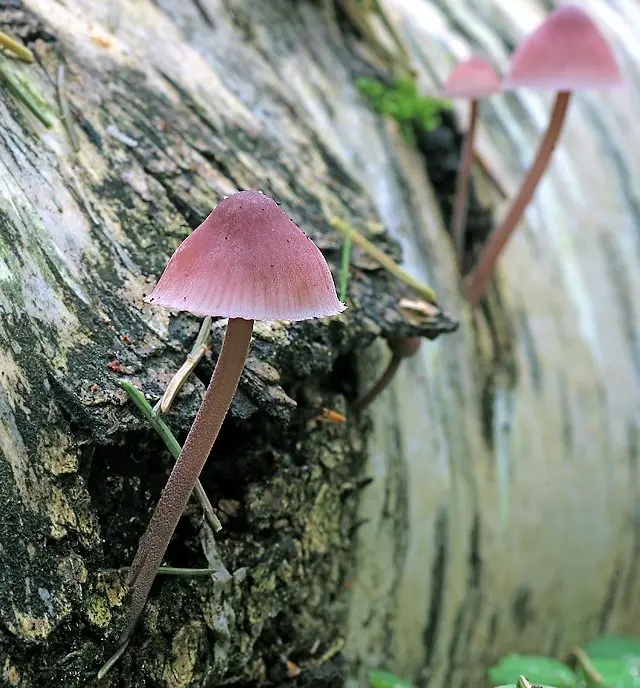Mycena haematopus (Mycena haematopus)
- Division: Basidiomycota (Basidiomycetes)
- Subdivision: Agaricomycotina (Agaricomycetes)
- Class: Agaricomycetes (Agaricomycetes)
- Subclass: Agaricomycetidae (Agaricomycetes)
- Order: Agaricales (Agaric or Lamellar)
- Family: Mycenaceae (Mycenaceae)
- Genus: Mycena
- Type: Mycena haematopus (Mycena blood-legged)
:
- Agaricus haematopodus
- Agaricus haematopus

If you go to the forest not only for mushrooms, but also for blackberries, you may not notice the characteristic feature of this fungus: it oozes a purple juice that stains your fingers just like blackberry juice.
Mycena blood-legged – one of the few easily identified types of mycenae: by the release of colored juice. One has only to squeeze the pulp, especially at the base of the leg, or break the leg. There are other types of “bleeding” mycenae, for example, Mycena sanguinolenta, in which case you should pay attention to the environment, these mycenae grow in different forests.
head: 1-4 cm in diameter, oval-bell-shaped when young, becoming broadly conical, broadly bell-shaped or nearly prostrate with age. The edge is often with a tiny sterile part, becoming ragged with age. The skin of the cap is dry and dusty with fine powder when young, becoming bald and sticky with age. The texture is sometimes finely evened or corrugated. The color is dark brownish red to reddish brown in the center, lighter towards the edge, often fading to greyish pink or almost whitish with age.
plates: narrowly grown, or grown with a tooth, sparse, wide. Full plates (reaching the legs) 18-25, there are plates. Whitish, becoming grayish, pinkish, pinkish-gray, pale burgundy, sometimes with purple spots with age; often stained reddish brown; the edges are painted like the edge of the cap.
Leg: long, thin, 4-8 centimeters long and about 1-2 (up to 4) millimeters thick. Hollow. Smooth or with pale red hairs located thicker towards the base of the stem. In the color of the cap and darker towards the base: brownish red to reddish brown or almost purple. Emits purple-red “bloody” juice when pressed or broken.
Pulp: thin, brittle, pale or in the color of the cap. The pulp of the cap, like the stem, releases “bloody” juice when damaged.
Smell: does not differ.
Taste: indistinguishable or slightly bitter.
spore powder: White.
Споры: Ellipsoidal, amyloid, 7,5 – 9,0 x 4,0 – 5,5 µm.
Saprophyte on deciduous wood (the appearance of coniferous species on wood is extremely rarely mentioned). Usually on well decomposed logs without bark. Grows in dense clusters, but can grow singly or scattered. Causes white rot of wood.
The fungus in various sources is ranked either as inedible or as having no nutritional value. Some sources indicate it as edible (conditionally edible), but completely tasteless. There is no data on toxicity.
From spring to late autumn (and winter in warm climates). Widespread in Eastern and Western Europe, Central Asia, North America.
Bloody mycena (Mycena sanguinolenta) is much smaller in size, secretes a watery red juice and usually grows on the ground in coniferous forests.
Mycena rosea (Mycena rosea) does not emit “bloody” juice.
Some sources mention Mycena haematopus var. marginata, there is no detailed information about it yet.
Mycena blood-legged is often affected by the parasitic fungus Spinellus bristly (Spinellus fusiger).
Photo: Vitaly









